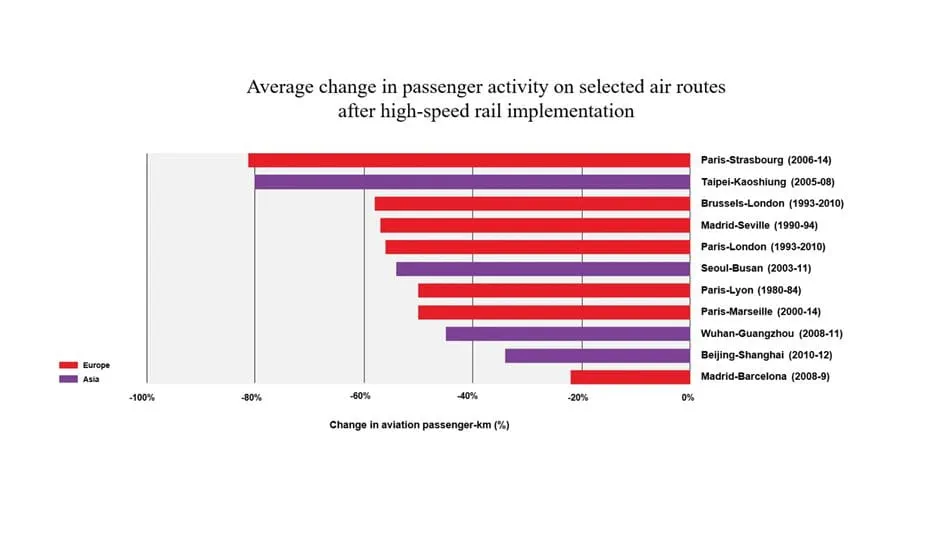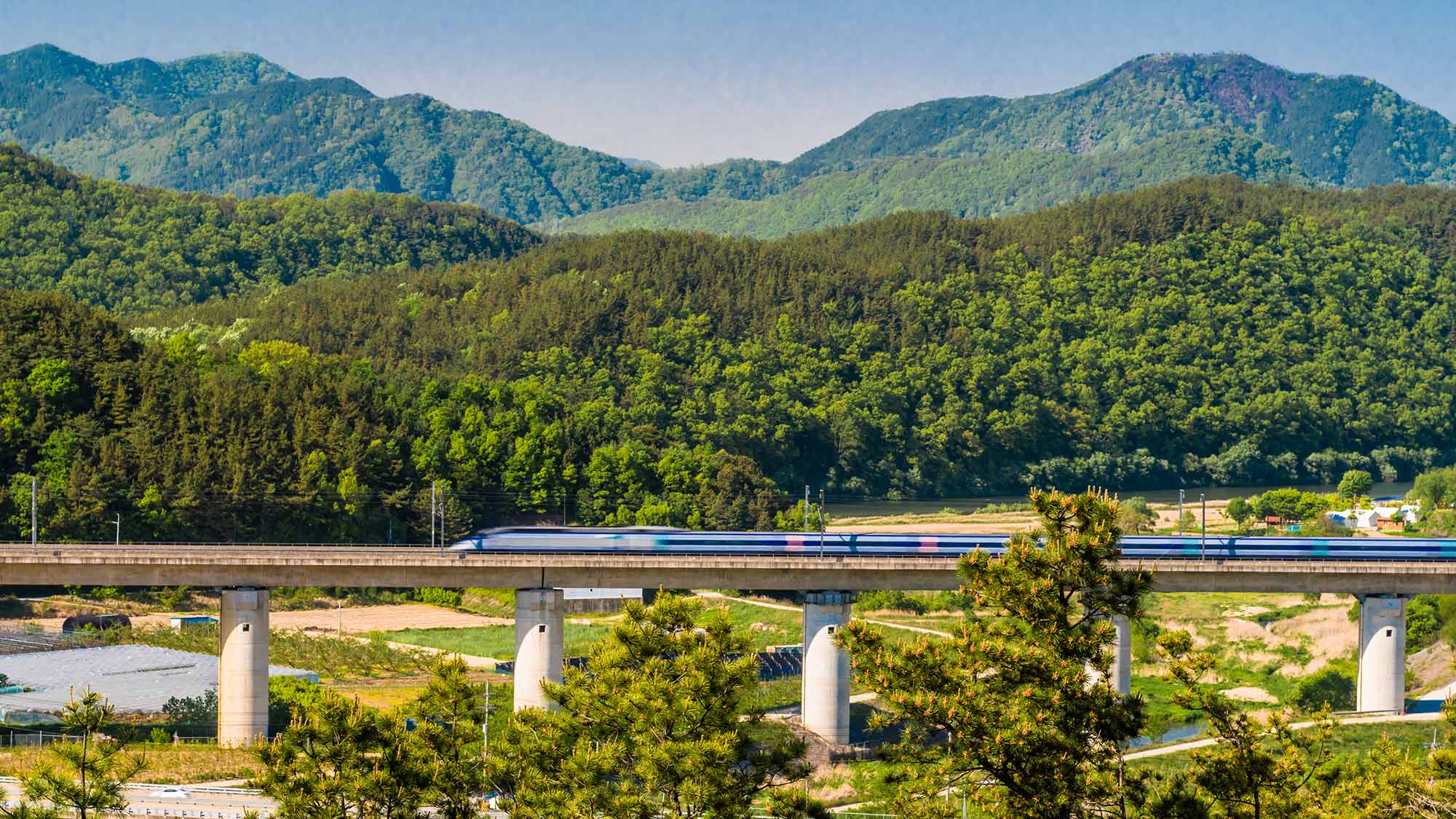High-speed rail projects can transform regions and even countries if they are meticulously planned and carry solid stakeholder support.
High-speed rail is one of the fastest growing infrastructure sectors in the world, and for good reason. It can be used to unlock economic and social benefits for whole regions and even countries and help square the circle of meeting decarbonisation targets while satisfying society’s demands for increased mobility.
At Arup we have over 40 years of experience in high-speed rail world-wide, and I want to share the five elements we have found to be essential to the successful delivery and operation of high-speed networks:
1. Make a strong economic and social case for high-speed rail
All major infrastructure projects must justify the disruption and expense they entail. Project sponsors have to build not just a clear business case, but a manifesto that lists all of the benefits high-speed rail will bring, setting out the projected whole-life value of the scheme and highlighting the environmental and social value as well as the economic benefits. As the programme transitions through its many phases – business case through to design, delivery and entry into service – the new leaders that are brought in to manage each unique set of challenges must also keep close to the original vision and outcomes set at the outset with the business case . Fortunately, there is a wealth of evidence to draw on that shows the power of high-speed schemes to drive positive change.
High-speed rail can catalyse permanent socio-economic gains. The UK’s High Speed 1 line (HS1), which Arup played in key role in planning and designing, generated more than £300mn in tourist revenue in Kent, the county the line passes through, in the nine years after its completion in 2007. To date, it has supported the creation of more than 50,000 jobs in economically disadvantaged parts of East London and the Thames Gateway area, as well as £8 billion of development.
High-speed rail enlarges commuter catchment areas, allowing city-based businesses to draw on a larger talent pool and giving workers access to more affordable housing. High-speed rail hubs establish a strong base for placemaking, enabling the development of destination stations mixing retail and leisure and underpinning the regeneration of whole city quarters.
2. Promote the environmental benefits
Environmental benefits are one of the major attractions of high-speed railways. The emissions saving of the modal shift of passengers from road or air to rail provides the headline gain: the carbon footprint of a high-speed rail passenger is less than 4% of the footprint of the same journey by air or private car, and this saving will continue to accrue long after the carbon debt of the initial construction phase has been paid back. Research on the effects the 250km Mediterranée high-speed line in southern France found that 40% of passengers had switched to rail from planes and 27% from cars. There is also scope to shift more freight shipments, especially of low-density high-value goods, onto high-speed lines, further increasing the carbon saving. These gains will become even more salient as national net zero targets, now less than three decades away, begin to loom.

High-speed rail projects also offer opportunities to design whole district-scale water, energy, and carbon-saving systems that can deliver decarbonisation benefits to communities. Northern California’s busiest terminus, Sacramento Valley Station, has been redeveloped as a sustainable transport hub. The project includes 100% renewable energy for the hub through on-site power generation and off-site sources, a district thermal energy system serving the new transit centre and adjacent developments, net-positive water use through on-site wastewater recycling, and biophilic principles integrated throughout the urban design. The Sacramento Valley Station area plan was the first municipality-led project to receive an approved Living Community Challenge (LCC) Vision Plan by the International Living Future Institute. The LCC is an ambitious framework and approach to holistic urban development which focuses on net-positive performance and symbiosis between people and the built environment.
Before the medium-term environmental benefits can begin to rack up, the impact of the construction stage has to be managed. Noise, dust and other disturbance must be tightly controlled in built-up areas. Best practice is increasingly to ensure a net gain in habitats and biodiversity as a result of the works. Arup is involved in the early works on the East West Rail project linking the English university cities of Oxford and Cambridge. The scheme has set an ambitious target of 10% biodiversity net gain, with a strong framework to assess delivery. Nature-based solutions to operational risks such as flooding and landslips are well developed and can be integrated into line design.
3. Ensure stakeholder buy-in
High-speed rail projects depend on the permission and support of multiple and wide groups of stakeholders. Building consensus across the political spectrum at the national or regional government level – where greenlighting and funding decisions rest – is vital. Broad acceptance of the case for societal and economic gain will help inoculate schemes against changes in administration, which may occur more than once in the 10 to 15 years often needed to complete a project. A strong case can also help secure private sector investment.
At a local level – in the communities a high-speed line will pass through as well as those it will serve – there is no substitute for early and regular engagement about the benefits of the project, the efforts that will be made to limit disturbance and damage during the construction stage, and the residual impact of the line in use.
Listening and responding to communities’ concerns is critical; suspicion that consultation is half-hearted or performative could fuel opposition. Strong engagement extends to giving communities a voice in decision-making, such as masterplanning. Arup has used visual and acoustic renderings in consultation programmes to help allay public fears about train noise and landscape disturbance. Where local benefits to areas the line crosses without stopping are limited, it is still possible to appeal to residents’ sense of national or regional pride and to detail the other economic, social and environmental benefits for future generations. Well-handled consultation and engagement programmes can create a groundswell of local advocacy for a scheme.
4. Integrate schemes into regional and national networks
Many of the benefits of high-speed rail accrue from speeding up rail transport between cities. But, to unlock its full transformative potential, a scheme has to be conceived as part of an integrated transport system with an understanding of the evolving behaviours or passengers and changing shape of the cities and regions the lines serve. While this is something that’s widely acknowledged – schemes are unfortunately not always planned as part of the bigger network picture. Links to local rail lines and other transport modes should be seamless, both in terms of the physical interchanges and the timetabling. High-speed lines offer the benefit of freeing up capacity on regional lines for extra local and freight services, but true integration enhances a whole national transport network.
In the US, the Northeast Corridor mainline that stretches more than 450 miles from Washington, D.C. to Boston runs through eight states. The line is the focus of a 15-year plan that involves the federal government, state administrations and nine separate rail operators, and that includes 150 projects to reduce travel times and open up markets across the Northeast.
5. Plan for the whole life of the system
High-speed rail’s capacity to deliver benefits decade after decade, will be enhanced by planning for the whole lifecycle of the system. The temptation to value-engineer infrastructure to cut costs at the construction stage may be strong, but the on-costs in future maintenance and renewal can substantially outweigh any early saving, and a whole-life approach to costing will throw this into relief.
The long timescales for high-speed rail projects make horizon scanning for technological and other developments a necessity. Futureproofing may be impossible, but changes in usage levels can be modelled and passive provision built in for advances in communication tech or utilities for easier retrofitting. There are challenges particular to each new system, but there are also proven solutions in use around the world. Learning from successful projects and adopting systems tried and tested in other networks helps ensure reliability and resilience.
Embracing the opportunity to supercharge parts of the transport system in an environmentally beneficial and socially inclusive way is the mark of a forward-thinking, technologically mature and environmentally responsible society. It is up to project leaders and other advocates to make that case forcefully.
 ;
;
